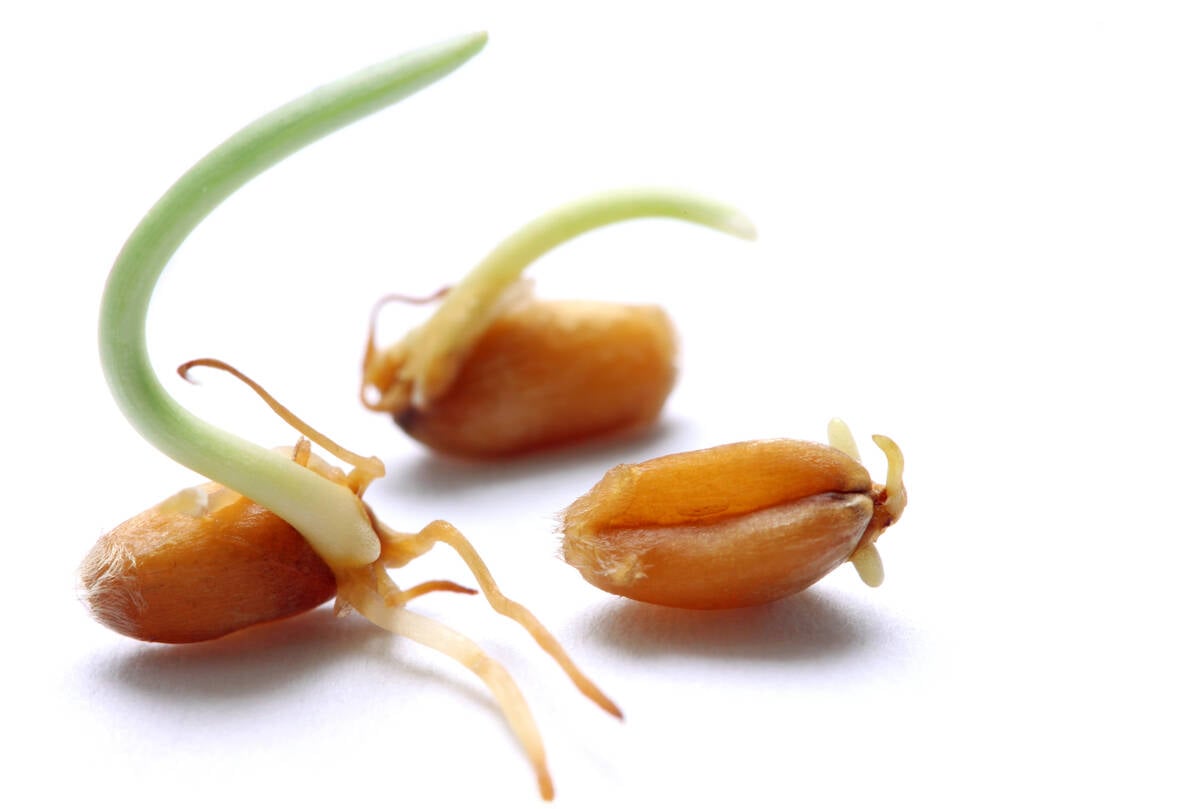GUELPH, Ont. — Corn growers in Italy grumbled when broad restrictions to neonicotinoid use were announced in 2008.
They feared yield losses to insect pests if the chemicals were re-moved but those fears never materialized, according to Franco Mutinelli, who spoke at the Aug. 12 Eastern Apicultural Society conference.
It is something for Ontario growers to consider in light of restrictions imposed by the province on neonicotinoid use.
Mutinelli, a scientist and Italian government official, said yield impacts were slight and today, Italy’s bee industry is healthy.
Read Also

Manitoba farmers fight sprouted wheat after rain
Rain in mid-September has led to wheat sprouting problems in some Manitoba farm fields.
“Corn producers were afraid but they did not experience any dramatic yield losses,” he said.
“Spring bee losses disappeared between March and June when corn is sown after the ban was enforced. … Over the last three years our winter losses have been below 10 percent, a normal range.”
Mutinelli heads his government’s national reference laboratory for beekeeping and has been involved with Italy’s program that tracks pesticide residues and honeybee pest and disease pressures.
There are about 50,000 beekeepers in Italy and 1.3 million honeybee colonies.
Colony losses reached 50 to 60 percent in northern Italy prior to 2009, Mutinelli said. That’s where most of the country’s grain corn is grown. As in North America today, the insecticides were part of seed corn purchases in Italy at the time.
While the restrictions amount to a ban on seed treatments, the insecticides are still used as foliar sprays for fruit and in greenhouses.
A conference panel on insecticide use also included Ernesto Guzman, director of the Honey Bee Research Centre at the University of Guelph, Nigel Raine of Guelph’s School of Environment Sciences and Christian Krupke, entomologist at Purdue University.
Krupke does not support a regulated approach to neonicotinoids. He said farmers should learn the true cost of the treatments and then decide whether to buy them.
He cited a three-year research study in Illinois showing no statistical yield benefit from neonicoti-noids in corn.
In Ontario, data leaked from the Pest Management Review Agency put the estimated benefit to Ontario field corn at 3.4 percent of the provincial farmgate value of $57.9 million.
For sweet corn it’s about 20 percent, or $9.7 million, and for seed corn about 15 percent, or $5.5 million.
The benefit to soybean production was negligible.
Farmers suggest that repeated use of neonicotinoids, primarily clothianidin and thiamethoxam, have reduced pest pressure to the point that they’re no longer an issue. However, Krupke said there is no data to support that.
Control offered by neonicotinoids is limited in both corn and soybeans, likely because the window is far narrower than many farmers believe, Krupke said.
Raine stressed the danger neon-icotinoids pose to all pollinators, including native bee species, butterflies, moths and other insects.
Globally, pollinators provide about $425 billion in services annually, he said. Of the food consumed by humans, one third requires pollination from insects other than honeybees.
Raine said there is clear evidence that pollinators are declining to the point that food crop yields and quality could be affected.
“If something isn’t done, it will come to a point when we will have a pollinator deficit,” Raine said.
Insecticides are only one aspect of the problem. Other factors include habitat loss, fragmentation and degradation.
Honeybees in particular face issues with pathogens and parasites, including varroa mite.
While it’s now recognized that honeybees can be killed by neonicoti-noids, Guzman said impact on a sub-lethal level is still unknown.
Some research links the chemicals to reduced grooming and hygiene in honeybees, along with memory loss.














